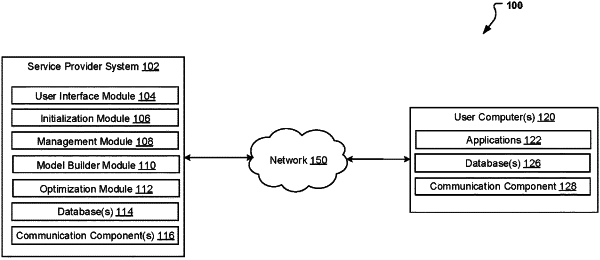| CPC G06N 20/20 (2019.01) [G06N 3/045 (2023.01); G06N 3/08 (2013.01)] | 20 Claims |

|
1. A system, comprising:
one or more hardware processors; and
at least one memory storing computer-executable instructions, that in response to execution by the one or more hardware processors, causes the system to perform operations comprising:
training a set of randomly selected machine learning models based on a set of training data and randomly selecting a set of machine learning algorithms for a set of machine learning platforms;
calculating a set of model performance metrics for the set of randomly selected machine learning models;
iteratively selecting a plurality of machine learning models to train on the set of training data, each iteration of the iteratively selecting comprising:
determining respective first performance metrics corresponding to the set of machine learning platforms from previous training iterations of the set of machine learning models using the set of training data,
selecting a first machine learning platform from the set of machine learning platforms using a first optimization function for the respective first performance metrics, wherein the first optimization function selects the first machine learning platform based on a greatest optimization metric;
determining a set of machine learning algorithms based on the first machine learning platform, wherein the set of machine learning algorithms comprise separate algorithms from the randomly selected set of machine learning algorithms,
selecting a first machine learning algorithm from the set of machine learning algorithms using a second optimization function for past performances of the set of machine learning algorithms from the previous training iterations,
determining a set of hyperparameters based on the first machine learning algorithm, and
selecting a first combination of hyperparameters from the set of hyperparameters using a third optimization function for previous uses of the hyperparameters from the previous training iterations and a hyperparameter value threshold; and
training, after training the set of randomly selected machine learning models, a new machine learning model based on the set of training data using the first machine learning platform, the first machine learning algorithm, and the first combination of hyperparameters;
calculating a new model performance metric of the new machine learning model;
comparing the calculated new model performance metric of the new machine learning model to a threshold metric for the calculated set of model performance metrics for the set of randomly selected machine learning models; and
determining whether to output the new machine learning model as a final machine learning model for a deployment in a production computing environment based on the comparing.
|